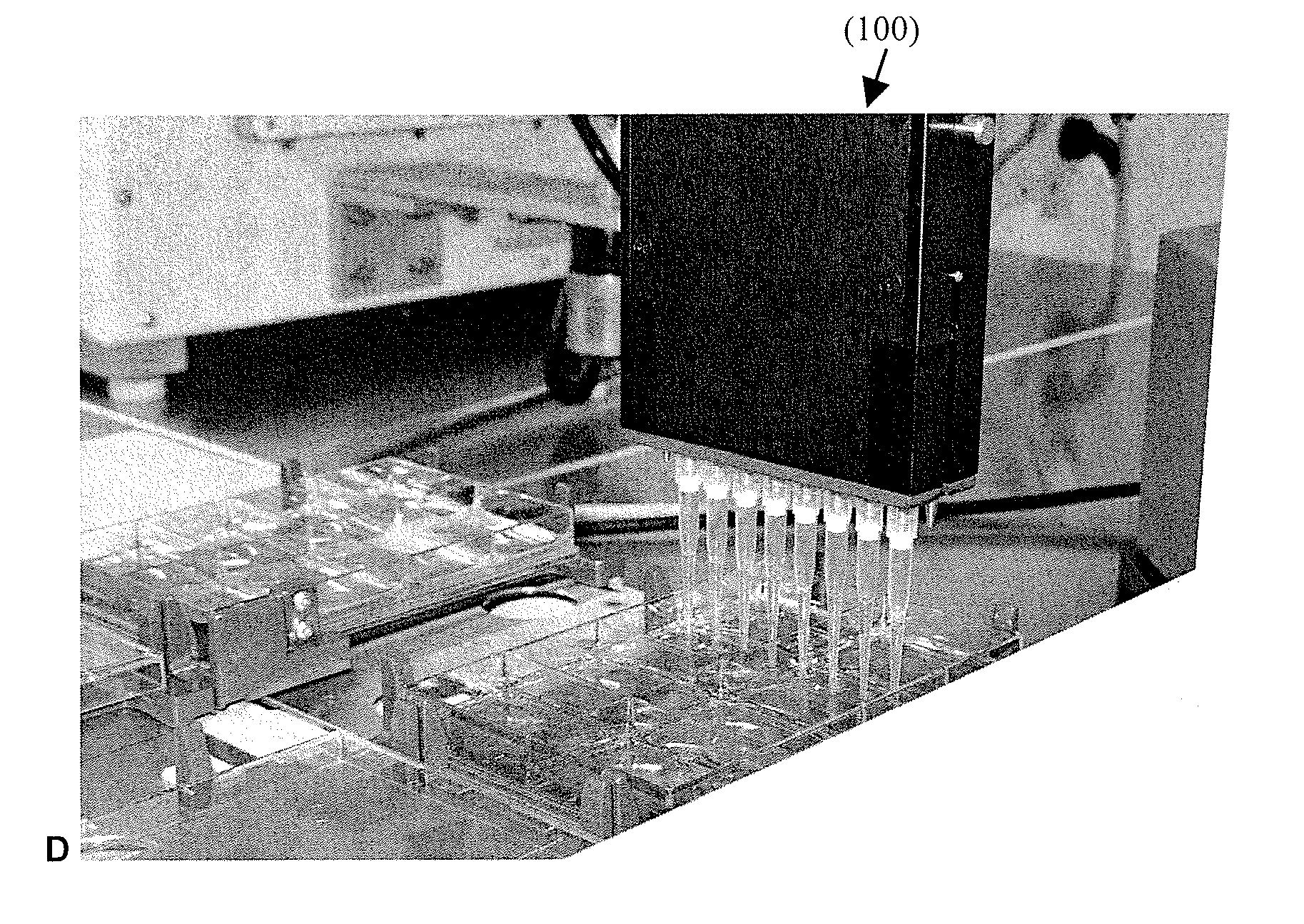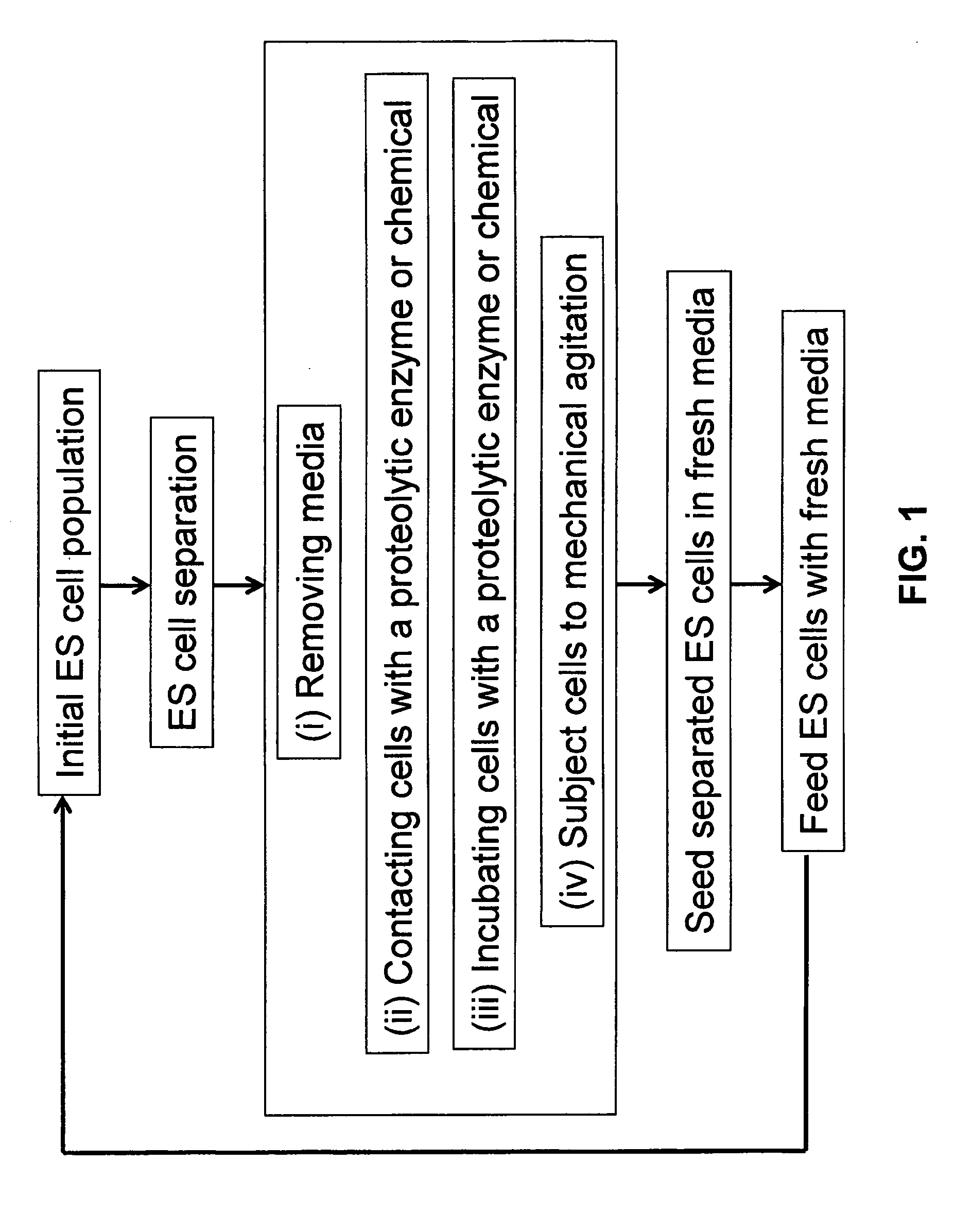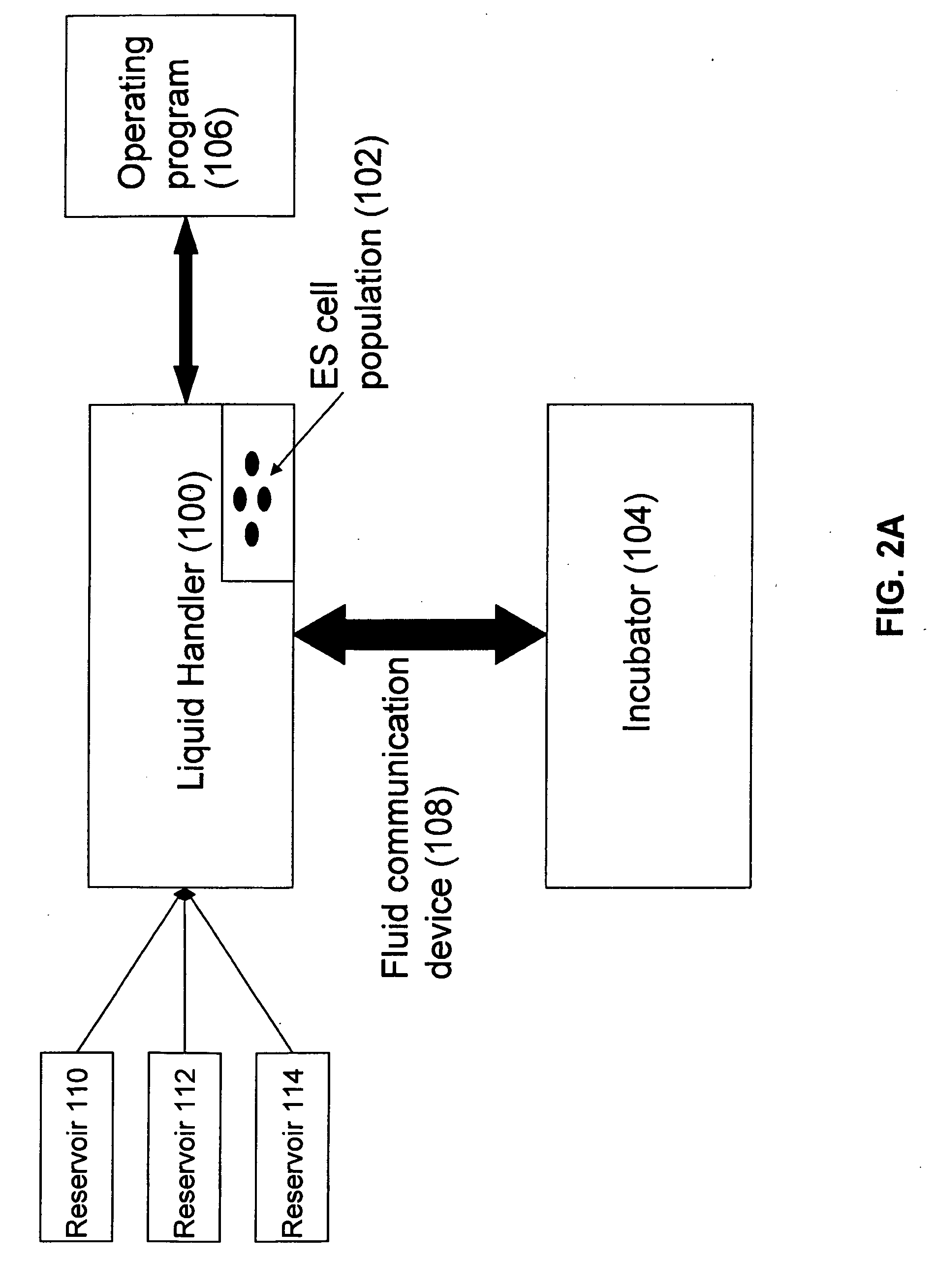Automated method and apparatus for embryonic stem cell culture
a technology of embryonic stem cells and automated methods, applied in the field of mammalian tissue cell culture systems, can solve the problems of high degree of personnel skills, limited supply of esc cultures, and high labor intensity
- Summary
- Abstract
- Description
- Claims
- Application Information
AI Technical Summary
Benefits of technology
Problems solved by technology
Method used
Image
Examples
example 1
Automated Passage and Expansion of Stem Cells
[0079]H1 cells passage 185 and 62 were cultured using TeSR media and split using a Beckman Coulter Biomek 2000 liquid handler (B2K), Gibco TrypLE Trypsin, TeSR media and TeSR Plus (containing 10 μM HA-100 and 0.5 mg / ml Invitrogen Soybean Trypsin Inhibitor). H1 cells, approximately 70% confluent, were placed on the B2K work surface along with 6-well plates coated with 8.6 μg / cm2 MATRIGEL™ (BD Bioscience) and a reservoir containing TRYPLE™ Trypsin. Using the Gripper tool, the lid from plate to be split was removed. The robot discarded the Gripper tool, and loaded the Wash1 tool to aspirate media from the plate with cells. Next, using the P1000 tool, TRYPLE™ enzyme was transferred to the plate to be split. The lid was replaced on the plate and the plate was moved into the 37° C. CYTOMAT™ incubator for 7 minutes to allow for cells to dissociate from plate.
[0080]During this time the lids from the MATRIGEL™ coated plate(s) were removed and exce...
example 2
Automated HES Cell Culture and Maintenance System
[0082]In order to improve labor and time-intensive maintenance of HES cells the inventors first automated feeding of HES cells. The proposed experiment was to maintain 10 6-well plates between passages by automated media exchange to establish sterile and reproducible conditions. The inventors achieved that goal by successfully automating media change using an established liquid handling system. This was an important step toward the automation of HES cell culture in this embodiment.
[0083]FIGS. 3A-B show the automated system used in the below experiments of exemplary embodiments. The system includes a Biomek2000 System (pin tools, wash tools, stacker, single and 8-channel 20, 200 and 1000 microliter pipetting tools (P20, P200, P1000, Beckman), a Hudson Platecrane XT, and a Heraeus Cytomat 6000. In this embodiment, a simple soda refrigerator was used for media storage from which the media was delivered directly to the culture wells. An i...
example 3
Automated Passaging and Expansion of hES Cells
[0089]Since passaging of HES cells is the most labor intensive and variable step in HES cell culture it leads to tremendous variability in the outcome of experiments depending highly on the skills of the technician. The inventors hypothesized that automation of passaging will lead to more robust and reproducible HES cell culture. Although the inventors could not confirm this theory with the current system and due to the limited time available for this project, the inventors were able to demonstrate a proof of principle by expanding one well of a 6-well plate of HES cells (˜2.5 million cells) to a final number of 160 plates (˜2-3 billion cells) equivalent to a 1000-fold expansion over 3 weeks, an otherwise nearly impossible task for a single person.
[0090]The inventors utilized the system described in Example 1 and developed procedures for passaging of HES cells that were based on simple liquid handling protocols. Recent innovations in spl...
PUM
| Property | Measurement | Unit |
|---|---|---|
| diameter | aaaaa | aaaaa |
| pore” diameter | aaaaa | aaaaa |
| temperature | aaaaa | aaaaa |
Abstract
Description
Claims
Application Information
 Login to View More
Login to View More - R&D
- Intellectual Property
- Life Sciences
- Materials
- Tech Scout
- Unparalleled Data Quality
- Higher Quality Content
- 60% Fewer Hallucinations
Browse by: Latest US Patents, China's latest patents, Technical Efficacy Thesaurus, Application Domain, Technology Topic, Popular Technical Reports.
© 2025 PatSnap. All rights reserved.Legal|Privacy policy|Modern Slavery Act Transparency Statement|Sitemap|About US| Contact US: help@patsnap.com



